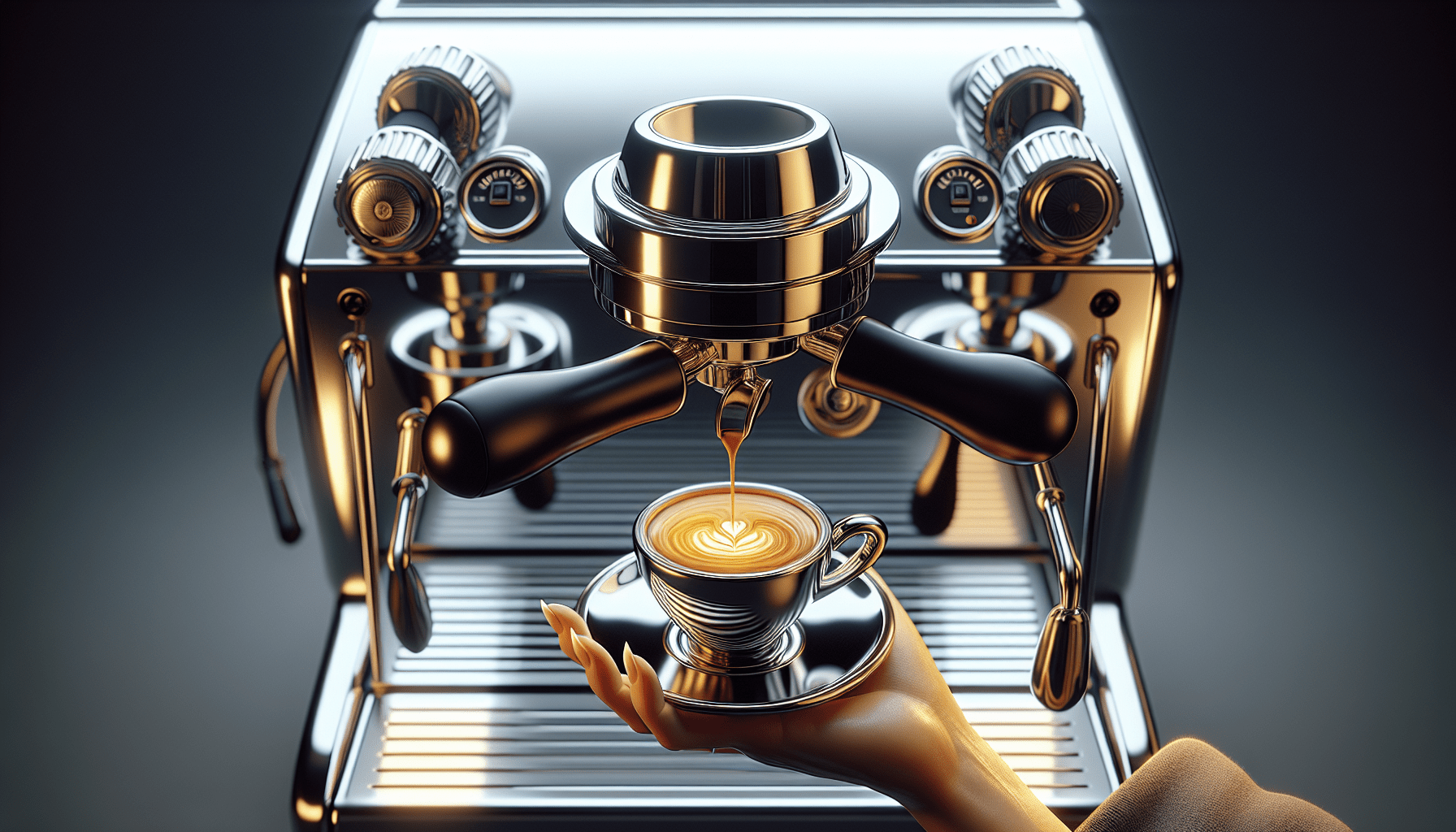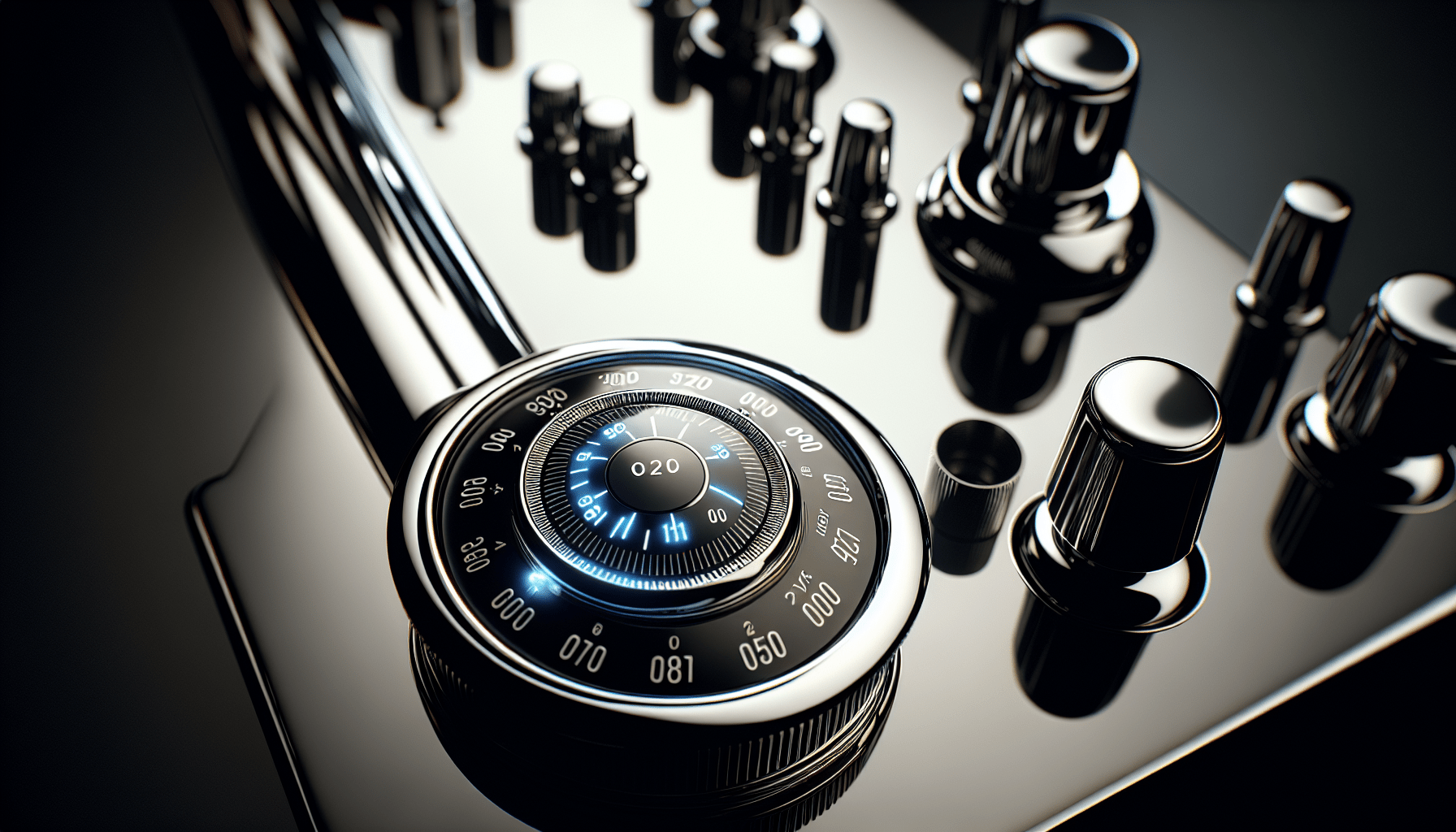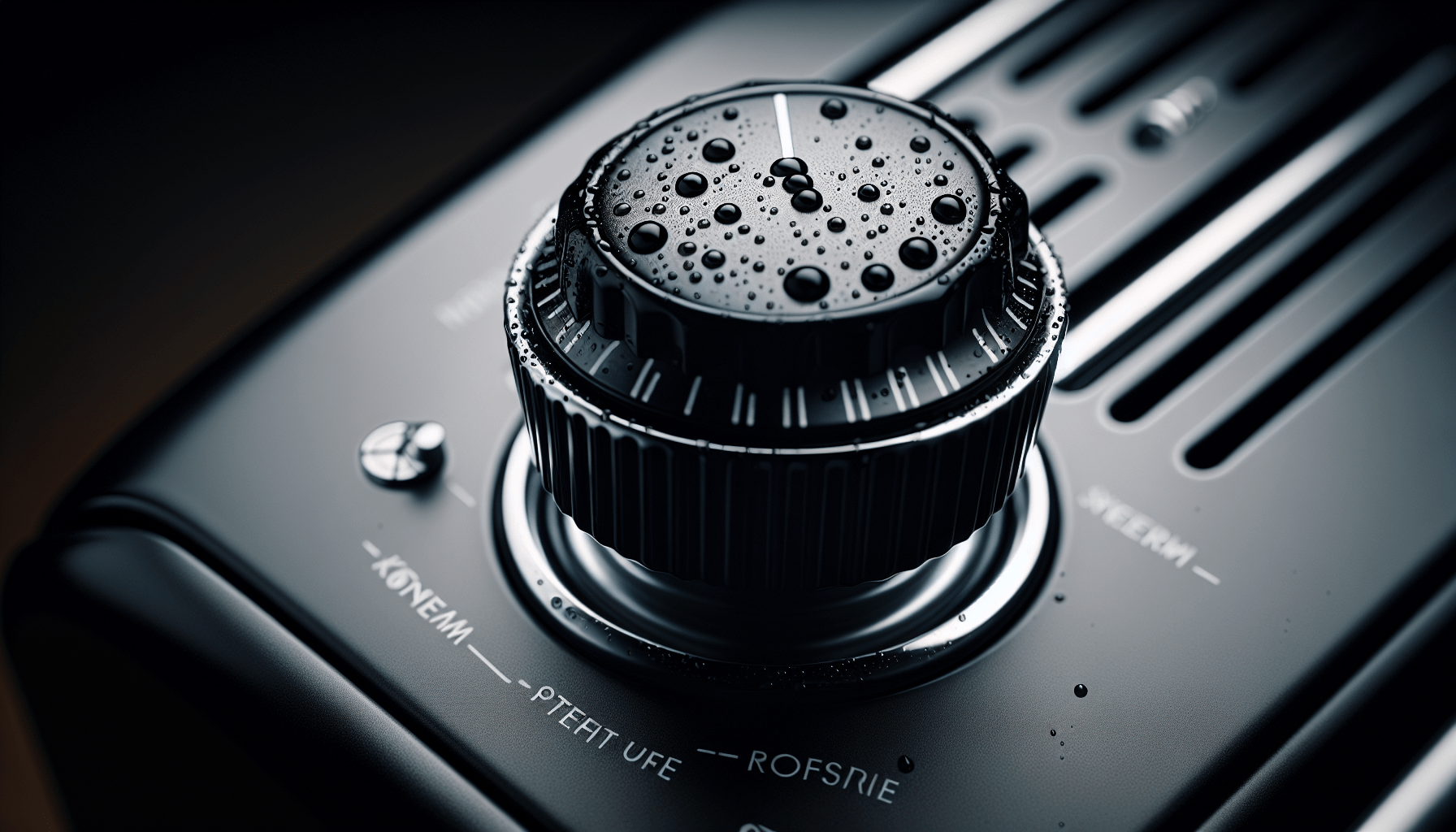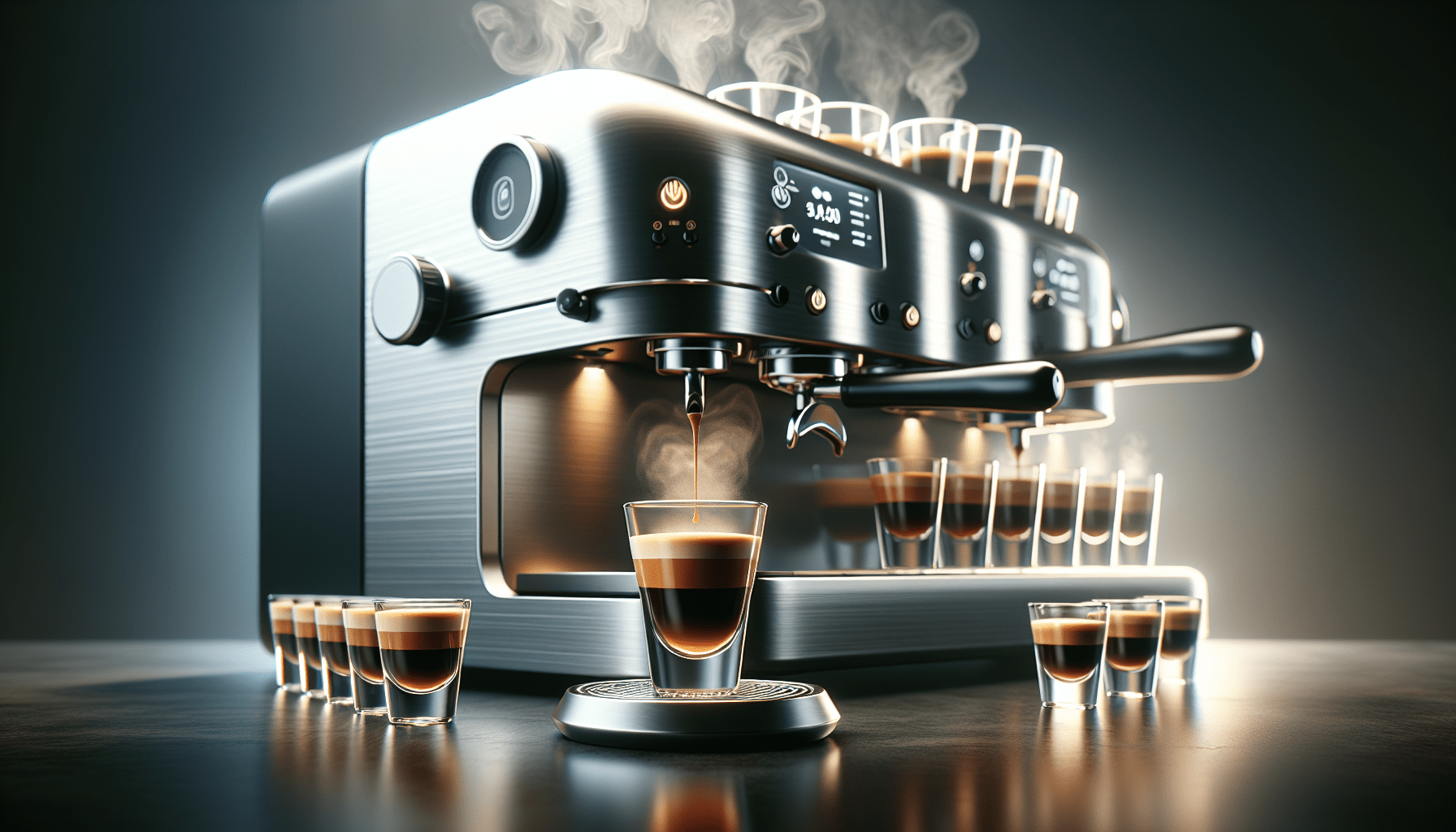Are you a coffee enthusiast who wants to take your home brewing skills to the next level? If so, it’s time to dive into the fascinating world of semi-automatic espresso machines. These incredible devices offer a perfect balance between convenience and control, allowing you to craft your favorite espresso-based beverages with precision. But what exactly is a semi-automatic espresso machine? In a nutshell, it’s a coffee machine that gives you the freedom to control certain aspects of the brewing process while automating others. Sounds intriguing, doesn’t it? Let’s explore the ins and outs of these impressive coffee gadgets that can elevate your home barista game.
What is a semi-automatic espresso machine?
A semi-automatic espresso machine is a coffee machine that allows you to have complete control over the brewing process, while also providing some automated features for convenience. Unlike manual espresso machines, which require you to manually control the pressure and temperature of the water, a semi-automatic machine takes care of these variables for you. With a semi-automatic espresso machine, you can grind and tamp the coffee grounds, control the brewing time, and steam the milk to create your perfect cup of espresso.
Components of a semi-automatic espresso machine
Boiler
The boiler is an essential component of a semi-automatic espresso machine. It is responsible for heating the water to the correct temperature for brewing and steaming. There are two types of boilers commonly found in semi-automatic machines: single boiler and dual boiler. Single boiler machines have one boiler for both brewing and steaming, which means you have to wait for the boiler to switch between functions. Dual boiler machines, on the other hand, have separate boilers for brewing and steaming, allowing you to do both simultaneously.
Grouphead
The grouphead is where the portafilter attaches to the espresso machine. It is responsible for delivering water from the boiler to the coffee grounds in the portafilter. The grouphead typically has a shower screen and dispersion plate that evenly distributes the water over the coffee grounds, ensuring a consistent extraction. The type and design of the grouphead can affect the quality and flavor of the espresso, so it is an important component to consider when choosing a semi-automatic machine.
Portafilter
The portafilter is the handle-like device that holds the coffee grounds and attaches to the grouphead. It contains a filter basket where you place the coffee grounds and allows water to pass through and extract the flavors. Portafilters come in different sizes, usually 58mm or 54mm, and materials, such as stainless steel or brass. The weight and distribution of the coffee grounds, as well as the way you tamp them, can impact the quality of the espresso shot.
Steam Wand
The steam wand, also known as the frothing wand, is used to steam and froth milk for cappuccinos, lattes, and other milk-based drinks. It is connected to the boiler and releases steam when activated. The steam wand allows you to create velvety smooth microfoam by introducing air into the milk while heating it. It is important to properly steam the milk to achieve the desired texture and temperature for your drink.
Working of a semi-automatic espresso machine
Grinding the beans
The first step in making espresso with a semi-automatic machine is grinding the coffee beans. It is crucial to have freshly ground beans for the best-tasting espresso. You can use a burr grinder to achieve a consistent grind size, which is necessary for proper extraction. Adjusting the grind size according to your preference and the type of coffee beans used is essential to getting the right flavor profile.
Tamping the espresso
After grinding the beans, the next step is tamping the espresso grounds into the portafilter. Tamping is the process of compacting the coffee grounds evenly and firmly, which allows for proper water flow and extraction during brewing. Using a tamper, apply pressure to the coffee grounds in a level and consistent manner. The amount of pressure applied can affect the extraction, so finding the right tamping technique is important.
Brewing the espresso
Once the coffee grounds are tamped, it’s time to brew the espresso. Attach the portafilter to the grouphead, making sure it is securely in place. Activate the brewing process by pushing a button or flipping a switch, depending on the machine. The water from the boiler will pass through the coffee grounds, extracting the flavors and producing a rich, concentrated shot of espresso. The brewing time can be adjusted to achieve different strengths and flavors.
Steaming the milk
If you want to make milk-based drinks, such as lattes or cappuccinos, you can use the steam wand to steam and froth the milk. Fill a pitcher with cold milk and place the steam wand into the milk, just below the surface. Open the steam valve to release the steam and create a whirlpool motion by moving the pitcher in a circular motion. This will help incorporate air into the milk, creating a smooth and velvety texture. Pay attention to the temperature of the milk to prevent scalding.
Advantages of semi-automatic espresso machines
Control over the brewing process
One of the main advantages of semi-automatic espresso machines is the control it gives you over the brewing process. You can adjust the grind size, tamping pressure, brewing time, and milk steaming technique to create your desired cup of espresso. This level of control allows you to experiment and fine-tune your brewing skills to achieve the perfect balance of flavors and aromas.
Customizable brewing options
Semi-automatic espresso machines offer a wide range of customizable brewing options. You can choose the type and origin of the coffee beans, adjust the grind size, and experiment with different brewing ratios to create unique flavor profiles. Additionally, you have the flexibility to adjust the strength of the espresso shot, the amount of milk in your drink, and the frothiness of the milk foam. This versatility allows you to cater to your personal preferences and cater to the preferences of your guests.
Choosing the right semi-automatic espresso machine
Budget
When choosing a semi-automatic espresso machine, it is important to consider your budget. Semi-automatic machines can range in price from affordable options for beginners to high-end models for coffee enthusiasts. Set a budget range that aligns with your needs and prioritize the features that are most important to you. Remember to consider the long-term cost of maintenance and potential upgrades when determining your budget.
Size and Space
Consider the size and available space in your kitchen or wherever you plan to place the espresso machine. Some semi-automatic machines can be quite large and require ample counter space, while others are more compact and suitable for smaller kitchens or limited countertop areas. Measure the available space and compare it to the dimensions of the machines you are considering to ensure a proper fit.
Durability and Build Quality
Investing in a durable and well-built semi-automatic espresso machine is essential for long-term satisfaction. Look for machines made with high-quality materials, such as stainless steel or brass, that can withstand daily use and the test of time. Read reviews from other customers, research the reputation and reliability of the brand, and consider warranties and customer support options when evaluating the durability and build quality of the machine.
Pressure and Temperature Control
The pressure and temperature control capabilities of a semi-automatic espresso machine are important factors to consider. Look for machines that offer adjustable pressure settings, as this can affect the extraction and flavor of the espresso shot. Temperature stability is also crucial for consistent results, so choose a machine with good temperature control and stability. Features like PID (Proportional-Integral-Derivative) temperature control can help maintain a precise and stable temperature throughout the brewing process.
Maintaining a semi-automatic espresso machine
Cleaning the machine
Regular cleaning is essential to maintain the performance and longevity of your semi-automatic espresso machine. After each use, remove the portafilter and clean the coffee grounds from the basket. Rinse the portafilter and wipe it dry. Use a clean cloth or brush to clean the grouphead and remove any leftover coffee residue. Periodically remove and clean the shower screen and dispersion plate. Refer to your machine’s user manual for specific cleaning instructions.
Descaling
Over time, mineral deposits can accumulate in the boiler and other internal components of the espresso machine. Descaling involves removing these deposits to maintain proper functionality and prevent issues such as low pressure. Follow the manufacturer’s instructions for descaling, using a suitable descaling solution or a mixture of water and vinegar. Regular descaling intervals depend on your water quality and usage but should be done at least every few months.
Replacing parts
Parts of a semi-automatic espresso machine may need to be replaced over time. This could include gaskets, seals, shower screens, or even the portafilter and steam wand. It’s important to use genuine parts from the manufacturer to ensure compatibility and proper functionality. If you’re not comfortable replacing the parts yourself, it is recommended to have a professional technician do the job.
Tips for using a semi-automatic espresso machine
Grind size and consistency
Experiment with different grind sizes to find the one that works best for your taste preferences. Finer grind sizes extract faster, while coarser grind sizes extract slower. It is also important to ensure consistency in your grind size to achieve consistent extraction. Invest in a good burr grinder and adjust the settings as needed.
Tamping pressure
Consistent tamping pressure is crucial for proper extraction. Experiment with different tamping pressures and find the one that works best for you. Apply even and level pressure throughout the tamping process. Using a calibrated tamper can help ensure consistent pressure.
Brewing time
The brewing time for espresso can vary depending on the machine, coffee beans, grind size, and personal preference. Start with the recommended brewing time provided by the manufacturer and adjust it to achieve your desired strength and flavor. Keep in mind that brewing too quickly can result in under-extraction, while brewing too long can lead to over-extraction.
Milk steaming technique
Mastering the milk steaming technique is essential for creating creamy and velvety milk foam. Practice creating a whirlpool motion with the pitcher to incorporate air into the milk. Pay attention to the temperature of the milk and stop steaming when it reaches your desired temperature. Properly textured milk should be smooth, without large bubbles, and have a creamy consistency.
Common troubleshooting issues with semi-automatic espresso machines
Leaking water
If you notice water leaking from your semi-automatic espresso machine, there could be several reasons. Check if the water tank is properly sealed and the connections are secure. Inspect the gaskets and seals for damage or wear and replace them if necessary. It is also important to regularly clean and descale the machine to prevent clogs or blockages that may cause leaks.
Low pressure
Low pressure during the brewing process can result in under-extracted espresso shots. Ensure that the portafilter is properly attached to the grouphead and that the coffee grounds are evenly tamped. Check for any obstructions or blockages in the shower screen or coffee basket that may be restricting water flow. If the issue persists, it may indicate a problem with the machine’s pump or pressure regulator, and professional assistance may be required.
Poor coffee extraction
If your espresso shots taste weak or have an off-flavor, it could be a sign of poor extraction. Check the grind size and consistency to ensure it is appropriate for espresso. Adjust the tamping pressure and ensure it is consistent and level. Clean the shower screen, dispersion plate, and portafilter to remove any coffee residue that may be affecting the extraction. If the issue persists, consider consulting a professional or contacting the manufacturer for assistance.
Comparing semi-automatic espresso machines with other types
Manual espresso machines
Manual espresso machines, also known as lever machines, require you to manually control the pressure and temperature during the brewing process. While they offer the highest level of control, they also require more skill and practice to master. Semi-automatic machines provide a balance between automation and control, making them more user-friendly for beginners or those who prefer a more convenient brewing process.
Super-automatic espresso machines
Super-automatic espresso machines offer the highest level of automation. They take care of everything from grinding the beans to frothing the milk, requiring minimal effort from the user. While they may lack the control and customization options of semi-automatic machines, they are ideal for those who value convenience and ease of use. Super-automatic machines are a good option for busy households or commercial settings where speed and efficiency are important.
Famous brands and models of semi-automatic espresso machines
Breville Barista Express
The Breville Barista Express is a popular semi-automatic espresso machine known for its combination of quality and affordability. It features a built-in grinder, adjustable settings, and a dedicated steam wand for milk steaming. The Barista Express is a great option for home baristas who want to have control over the brewing process without breaking the bank.
Gaggia Classic Pro
The Gaggia Classic Pro is a well-regarded semi-automatic espresso machine that has been a favorite among coffee enthusiasts for many years. It boasts a commercial-style grouphead, three-way solenoid valve, and a powerful steam wand. The Classic Pro is known for its durability and consistent performance, making it a reliable choice for espresso lovers.
Rancilio Silvia
The Rancilio Silvia is a high-quality semi-automatic espresso machine loved by professionals and home baristas alike. It features a commercial-grade brass grouphead, stainless steel construction, and a large water reservoir. The Silvia offers excellent temperature stability and consistent extraction, allowing you to brew espresso like a pro.
La Pavoni EPC-8
The La Pavoni EPC-8 is a classic semi-automatic espresso machine that stands out for its elegant design and timeless appeal. It is a lever-operated machine, providing full control over the brewing process. The EPC-8 is crafted with high-quality stainless steel and brass components, ensuring durability and longevity. It is a great choice for those who appreciate traditional espresso-making methods.
Nuova Simonelli Oscar
The Nuova Simonelli Oscar is a premium semi-automatic espresso machine known for its professional-grade performance and build quality. It features a powerful heat exchange boiler, programmable volumetric dosing, and a steam wand with a cool-touch feature. The Oscar can deliver consistent and high-quality espresso shots, making it a top choice for enthusiasts and small coffee shops.
In conclusion, a semi-automatic espresso machine offers the perfect balance between control and convenience. With the ability to adjust various parameters, brew your favorite espresso shots, and steam milk to perfection, these machines provide an enjoyable and rewarding coffee experience. By considering factors such as budget, size, durability, and maintenance, you can choose the right semi-automatic machine that suits your needs and preferences. Whether you’re a beginner or a seasoned barista, a semi-automatic espresso machine is sure to elevate your home brewing game.




